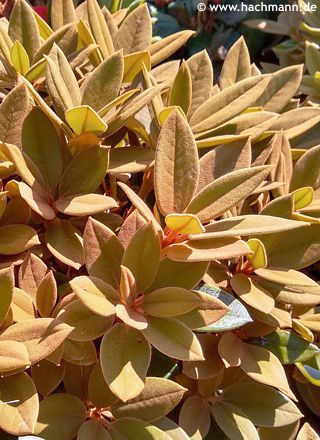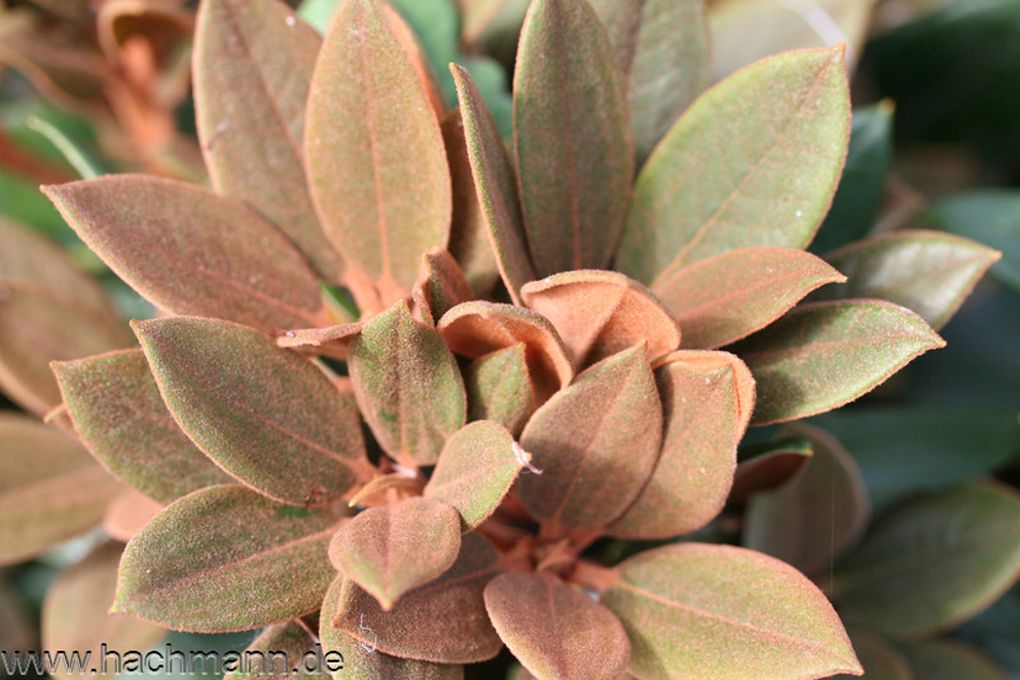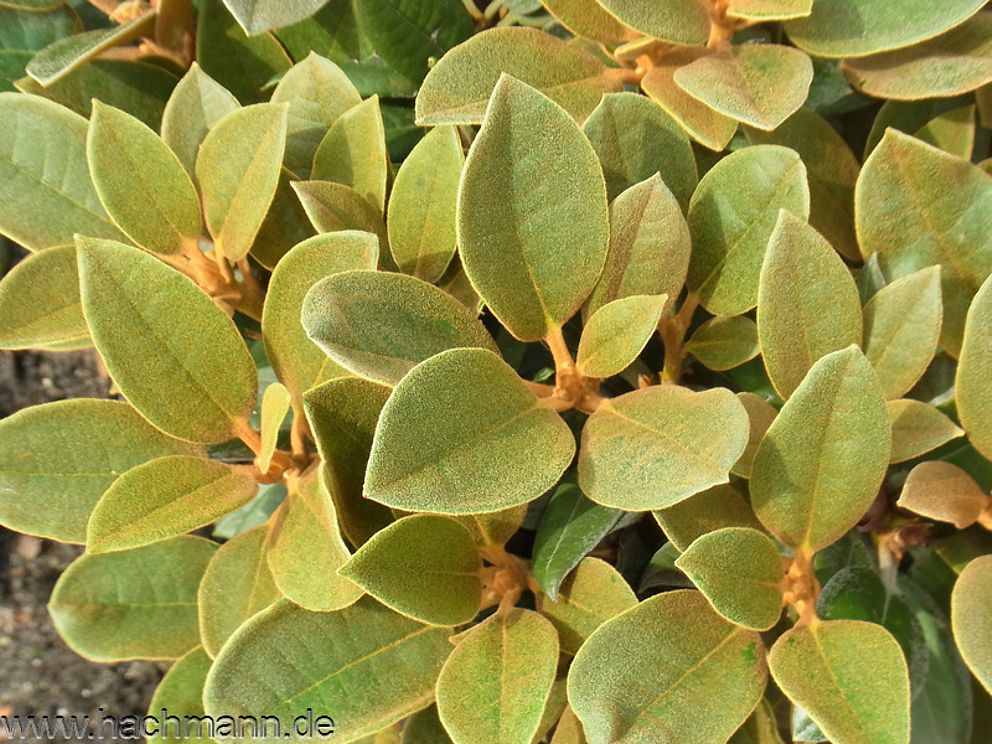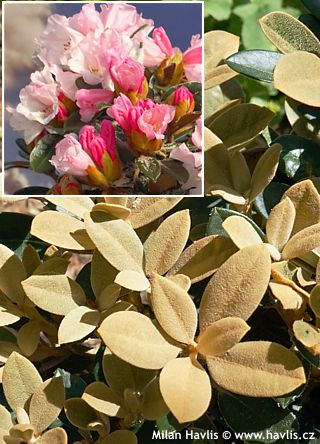Rhododendron 'RUSTY DANE' rhododendron


Rhododendron
Rhododendrons are reliable, beautifully flowering, evergreen shrubs of variable origin: S.W. China, Himalayas, Northern America, and even Europe. The original species were hybridized several times for better performance so in the 1950´s there were more than 10,000 cultivars registered, and the number keeps increasing.Flowering is not a key feature on this variety and is not even regular. When the flowers appear, they are broadly campanulate, pure white, and open from light pink buds in second half of May. Rusty Dane is sun tolerant and naturally forms a compact and dense shrub of dome-shaped habit. Its mature size reaches about one meter in height and a little more in width. The indumentum on the leaves turns creamy white in summer while their reverse keeps its rusty shades, therefore, in the ericaceous border it is best combined with similar rhododendron and azalea specialties with attractive foliage colour.
The Dane series of rhododendron so far includes these varieties: Best Dane, Debbie Dane, Chocolate Dane, Rusty Dane, White Dane, Sticky Dane, Birck's Dane, Silver Dane, Great Dane, Needle Dane, and Wooly Dane (as of 2022). They are developed by Danish botanists and rhododendron lovers Svend Hansen and Jens Christian Birck. Svend during his trips to Yunnan, Setchuan and Nepal collected many seeds of wild-growing species, which enchanted him mainly due to their unusually shaped or colored leaves. In the southeastern part of the Himalayas, he often climbed up to an altitude of 5,000 meters, where few people went to, and he was convinced that thanks to the challenging climate the plants raised from the seeds collected there would thrive also in most parts of Europe. He closely observed their behavior and growing conditions, and as he is not only a botanist and collector, but also a nurseryman and seller, he understands that his plants must also meet strict criteria for amateur cultivation. Dane rhododendrons are therefore not only pretty and unique things, but they are also reliable and hardy.
For a better-looking plant deadhead rhododendrons where possible. They are not supposed to be pruned but may be rejuvenated if needed. You can either wait until the flowers have bloomed or prune it immediately after all frosts in late winter. This will result in quicker regeneration since the sap will wake up dormant buds as opposed to feeding the flower buds which will lead to a certain level of exhaustion. The roots are shallow, spreading to sides in search for nutrients. Never plant them too deep. The soil must well-drained, acidic (of pH value 4.5-5.5), rich in humus, cool, and always moist. Ideal soil mixture is peat with lime-free, light garden soil topped with leaf-mould. It is hardy to at least -23 °C (USDA zone 6) but is expected to withstand a few degrees lower (results of further trials pending).
Last update 28-12-2022
Goods are shipped all over Europe. For Russia and U.K. and for further details please read about SHIPPING OPTIONS HERE.
Are you interested in a serious discount for orders NOV-FEB? Check your options here.
THE PRICES INCLUDE VAT of 15%. For quick conversion you can use 1 CZK = approx. 0.04 EUR
- STANDARD QUALITY - Plants of this group are 1st class quality with number of branches and overall density adequate to their size and age, considering they were container grown.
- DE LUXE QUALITY - This label guarantees a luxurious quality of manually selected plants that, compared to their height and age, are exceptionally dense and beautiful.
- EXTRA - These plants are usually mature and bigger specimens with exceptional overall appearance.
- STANDARD (as described in the plant form) means a tree with a trunk of 190-210 cm and a crown at the top, unless specified differently. The commercial size for trees is their girth measured in the height of 1m from ground.
- HOBBY - These plants are of the same quality as our standard-quality plants but younger and therefore cheaper.
- SHRUB - a woody plant with branches growing bushy from the ground level.
- HALF-STANDARD or MINI-STANDARD - a small tree with shorter trunk, its size is usually specified.
- FEATHERED - These are trees with branches growing already from the base of the trunk and up along the stem.
- GRASSES and PERENNIALS - Sizes given usually read the diameter of the pot or the clump, as specified.

















